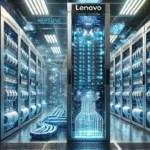Intel is planning to break itself up, something that the most recent ex-CEO, Pat Gelsinger, disagreed with, which is why he is the latest ex-CEO. Craig Barrett was the Intel CEO directly after Andy Grove, and he has gone public with his view that breaking up Intel is not only a bad idea, but having Gelsinger step down wasn’t smart either. Many Intel employees, existing and ex, also feel that Intel’s board stumbled with their two moves, and there is a decent chance that they are right.
Let me walk you through it.
Breaking Up a Company
There are monetary advantages to breaking up a company, but they often tend to be tactical and leave the company much weaker than it was. For instance, the breakup of HP resulted in two companies, neither of which had the span of Lenovo or Dell (HP’s primary computing competitors), leaving the companies far weaker than they were as a contiguous unit. Tactically, the market liked the move, but strategically, the firms struggle with their now much larger enterprise competitors (and the way the breakup was done, both firms really don’t want to get together again now).
IBM has spun out a lot of businesses, and that made the company far smaller and weaker. You could argue it may be more agile, but it is far from its once dominant status, and there is no clear path to getting that back. For a firm that once ruled the tech sector, IBM remains a shadow of what it once was. Part of that is because few people see the brand anymore, while at its peak, there were desktop products, copiers and even phones with the IBM logo on them. Granted, the phone thing didn’t work out very well, but that unit was an acquisition that was misunderstood and thus mismanaged, and in IBM’s defense, AT&T made a nearly identical mistake with NCR.
What Intel is contemplating is spinning out manufacturing, something that IBM did with IBM Microelectronics, and AMD did (AMD’s highly rated CEO is out of IBM Microelectronics and thus IBM lost the benefit of her employment when they spun out that entity). When you spin out a major portion of a company, there is a ton of unanticipated collateral damage, and I doubt the manufacturing side of Intel can survive, let alone flourish, as an independent entity. It would need to be sold to someone like TSMC, but that would increase TSMC’s competitiveness because TSMC is a Taiwanese company and reduce Intel’s as a result. And should China take Taiwan, then these massive plants, critical to U.S. defense, would be disrupted if not destroyed and leave the U.S. and U.S. tech, automotive, aerospace and defense companies at very high risk of not being able to get or replace critical parts.
Firing a CEO
Firing a CEO for bad behavior like Intel did with Brian Krzanich strengthens the firm, but both when Paul Ottolini and Pat Gelsinger were fired, it was not because they weren’t performing. It was because the board felt strongly that Intel was going in the wrong direction and the CEOs likely did, because they were closer to the problems, know best. The trigger for firing Ottolini was that the board wanted Intel to go into smartphones, something Intel tried and failed spectacularly at. Ottolini was right. Intel wasn’t set up to go into that market, and while he was set up by Brian Krzanich, the end result was a significantly weakened Intel.
I think the trigger for getting rid of Gelsinger was likely Biden losing the U.S. election and the very real threat that not only would Trump kill the Chips Act (something he lacks support for), but that he would aggressively move against Intel (given Intel’s strategic nature, I doubt he’d have broad support for that either). President Trump is aggressively working to destroy any and all accomplishments Biden made, so I understand the board’s concern.
However, there are protections that Intel could have used, and it could have moved Gelsinger to an Executive Chairman position and had another person be the figurehead CEO, creating the impression that Gelsinger was no longer there even though he’d still be running the company. But Gelsinger weakened marketing during his tenure, and to make this work, marketing needed to be extremely strong. So, I think the better path, rather than firing Gelsinger, would have been to restore marketing to something closer to what it was in Andy Grove’s time and give Intel’s CMO the kind of support that Dennis Carter enjoyed.
Getting rid of Gelsinger just created a power vacuum, and putting in place two temporary CEOs will make it very hard for intel to come up with a company-wide vision, let alone execute it (Intel also needs a real CTO). In other words, strengthen Intel’s defense and make it more like Grove’s Intel rather than shooting the guy who had been, up until the U.S. election, executing well. There may have been pressure because of the massive Intel shareholder lawsuit, but Intel just won that, making this concern moot; nice work Intel legal.
Wrapping Up: I Agree with Barrett
When Craig Barrett was CEO, I didn’t agree with him a lot, but he was innovative, he loved Intel and he knew the company about as well as any C-level executive could. I think he has it right. Breaking up Intel will significantly weaken the company, and moving from Gelsinger to a shared CEO solution will make it hard to come up with and execute a company-wide vision. Sadly, Intel isn’t alone with regard to boards thinking tactically rather than strategically. I see the threat Intel’s tying to avoid, but by going down this path, it’s likely to critically weaken not only Intel but the U.S. in general, and I don’t think that is wise at all.
Intel’s board needs to rethink this path because there is a decent chance, given how competitive the market is and how rapidly China is advancing in this space, that the path it’s on will result in a massively weakened Intel.








